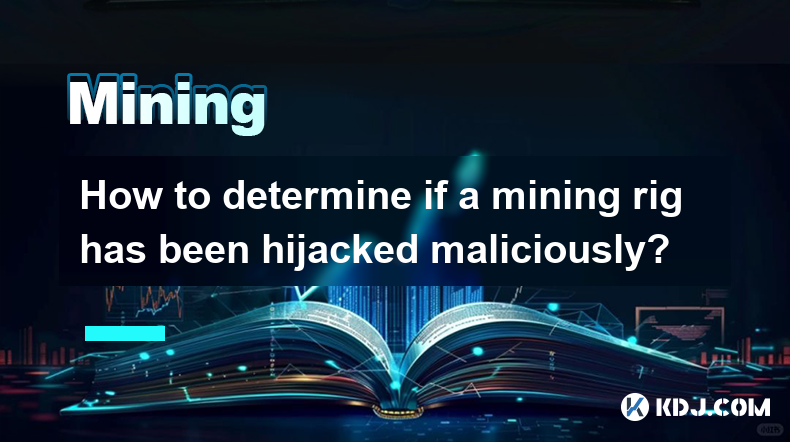-
 Bitcoin
Bitcoin $82,099.5826
-1.34% -
 Ethereum
Ethereum $1,817.9545
-1.07% -
 Tether USDt
Tether USDt $0.9999
0.02% -
 XRP
XRP $2.0815
-3.96% -
 BNB
BNB $595.8647
-1.53% -
 Solana
Solana $124.0327
-0.92% -
 USDC
USDC $1.0000
0.01% -
 Dogecoin
Dogecoin $0.1634
-3.94% -
 Cardano
Cardano $0.6445
-4.65% -
 TRON
TRON $0.2336
1.34% -
 Toncoin
Toncoin $3.9381
2.61% -
 Chainlink
Chainlink $13.2201
-3.75% -
 UNUS SED LEO
UNUS SED LEO $9.0947
-5.84% -
 Stellar
Stellar $0.2646
-1.90% -
 Avalanche
Avalanche $18.6234
-3.91% -
 Shiba Inu
Shiba Inu $0.0...01214
-3.88% -
 Sui
Sui $2.2126
-6.78% -
 Hedera
Hedera $0.1604
-6.61% -
 Polkadot
Polkadot $4.0237
-1.97% -
 Litecoin
Litecoin $82.1655
-4.48% -
 MANTRA
MANTRA $6.2849
-1.13% -
 Bitcoin Cash
Bitcoin Cash $298.8203
-2.66% -
 Dai
Dai $1.0000
0.02% -
 Bitget Token
Bitget Token $4.4293
-4.57% -
 Ethena USDe
Ethena USDe $1.0000
0.01% -
 Pi
Pi $0.6976
-9.77% -
 Hyperliquid
Hyperliquid $12.5853
-0.74% -
 Monero
Monero $215.4717
-0.22% -
 Uniswap
Uniswap $5.8825
-1.85% -
 Aptos
Aptos $5.1958
-2.29%
How to determine if a mining rig has been hijacked maliciously?
A compromised mining rig may show sudden hash rate drops, high energy use, software changes, odd network activity, and missing payouts; isolate and scan if suspected.
Mar 29, 2025 at 03:50 am

Recognizing the Signs of a Compromised Mining Rig
Mining rigs, while designed for profitability, are unfortunately vulnerable to malicious hijacking. This unauthorized access can significantly impact your mining operations and potentially lead to financial losses. Identifying a hijacked rig requires vigilance and understanding of common attack vectors. Early detection is crucial to minimize damage and regain control.
Unexpected Performance Changes
One of the most obvious signs is a sudden and unexplained drop in your mining rig's hash rate. This could indicate that the malicious actor is diverting your computing power to mine a different cryptocurrency, or using your resources for other nefarious purposes. Monitor your hash rate regularly using your mining software's dashboards. Significant and persistent drops without any apparent hardware or software changes should raise immediate concern.
Unusual Energy Consumption
A compromised rig might exhibit unusually high energy consumption. This is because the malicious software might be running intensive processes alongside your mining software, consuming extra power. Compare your rig's power usage against its typical baseline. A substantial increase warrants investigation. Check your electricity bills for any unexpected spikes.
Software Modifications
Malicious actors often modify your mining software or operating system to maintain control. This could involve adding or altering files, changing system settings, or installing backdoors. Regularly check your system files for any unfamiliar additions or modifications. Use a reputable antivirus program and keep it updated to detect and remove malicious software.
Network Anomalies
A hijacked rig might communicate with unusual IP addresses or domains. This could be the attacker's command-and-control server used to manage the compromised rig. Use network monitoring tools to observe your rig's network activity. Look for connections to unfamiliar or suspicious IPs, especially those outside your expected network range.
Wallet Access Issues
If your mining rewards are not reaching your designated wallet, it could be a sign of a hijacked rig. The attacker might redirect your earnings to their own wallet. Regularly check your mining pool payouts and compare them to your expected earnings. Any discrepancies should be investigated.
Steps to Take If You Suspect a Hijack
If you suspect your mining rig has been compromised, follow these steps:
- Isolate the Rig: Immediately disconnect the rig from your network to prevent further damage or data breaches.
- Change Passwords: Change all relevant passwords, including your mining pool account, wallet passwords, and operating system login credentials.
- Perform a Full System Scan: Use a reputable antivirus program to perform a thorough scan for malware.
- Reinstall the Operating System: A clean reinstall of the operating system is often the most effective way to eliminate persistent malware.
- Update Firmware and Software: Ensure all your hardware and software are updated to the latest versions to patch known vulnerabilities.
- Monitor Network Activity: After reinstalling, carefully monitor your rig's network activity for any suspicious connections.
- Seek Professional Help: If you are unsure about any step or if the problem persists, consider seeking help from a cybersecurity professional.
Understanding Potential Attack Vectors
Several methods can be used to hijack a mining rig. Understanding these vectors helps in implementing preventative measures.
- Malware Infections: Malicious software can be downloaded through infected websites, email attachments, or compromised software.
- Exploiting Vulnerabilities: Attackers can exploit security flaws in your mining software, operating system, or hardware to gain access.
- Phishing Attacks: Deceptive emails or websites can trick you into revealing your login credentials or downloading malware.
- Weak Passwords: Using weak or easily guessable passwords makes your rig an easy target for brute-force attacks.
- Unpatched Software: Outdated software often contains known vulnerabilities that attackers can exploit.
Preventative Measures to Secure Your Mining Rig
Proactive measures are vital in preventing hijacking.
- Use Strong Passwords: Implement strong, unique passwords for all your accounts and devices.
- Keep Software Updated: Regularly update your mining software, operating system, and firmware to patch security vulnerabilities.
- Use a Firewall: A firewall helps to block unauthorized access to your mining rig.
- Employ Antivirus Software: Install and regularly update a reputable antivirus program.
- Regular Backups: Create regular backups of your important data to prevent data loss in case of a compromise.
- Network Segmentation: Isolate your mining rig from your main network to limit the impact of a potential breach.
- Monitor Your Rig: Regularly monitor your rig's performance, energy consumption, and network activity for any anomalies.
Frequently Asked Questions
Q: What are the typical signs of a mining rig hijack?
A: Typical signs include unexpected performance drops (lower hash rate), increased energy consumption, unusual network activity (connections to unfamiliar IPs), software modifications, and missing mining payouts.
Q: How can I prevent my mining rig from being hijacked?
A: Implement strong passwords, keep software updated, use a firewall and antivirus, regularly back up your data, and monitor your rig's performance and network activity. Consider network segmentation to isolate your mining rig.
Q: What should I do if I suspect my mining rig has been compromised?
A: Immediately isolate the rig from your network, change all relevant passwords, perform a full system scan, reinstall the operating system, and consider seeking professional help.
Q: Can a hardware failure mimic a hijack?
A: Yes, hardware malfunctions can sometimes mimic the symptoms of a hijack. Thoroughly check your hardware for any issues before concluding a hijack.
Q: Are all mining rigs equally vulnerable?
A: No, the vulnerability of a mining rig depends on several factors, including the operating system, software used, security practices, and the overall network security. Older, less secure systems are more at risk.
Disclaimer:info@kdj.com
The information provided is not trading advice. kdj.com does not assume any responsibility for any investments made based on the information provided in this article. Cryptocurrencies are highly volatile and it is highly recommended that you invest with caution after thorough research!
If you believe that the content used on this website infringes your copyright, please contact us immediately (info@kdj.com) and we will delete it promptly.
- Scottish law changes coming into effect in April - including car tax and living wage changes
- 2025-03-31 20:55:12
- Green light to demolish Black Country leisure centre for £24m replacement
- 2025-03-31 20:55:12
- Bitcoin (BTCUSD) Price Dips Below $82K as Market Mood Remains Subdued This Week
- 2025-03-31 20:50:12
- Bitcoin (BTC) Price Prediction: Will BTC Hold the $80K Support Level?
- 2025-03-31 20:50:12
- Organizer: Jerry, ChainCatcher
- 2025-03-31 20:45:13
- The House of Doge, a new Dogecoin Foundation partner, announced they are holding a reserve of 10 million DOGE
- 2025-03-31 20:45:13
Related knowledge

Are the mining income affected by the mining pool allocation mechanism?
Mar 31,2025 at 05:49pm
Understanding Mining Pool Allocation MechanismsMining pools aggregate the hashing power of many miners to increase the chances of successfully mining a block. The reward for successfully mining a block is then distributed among the pool's participants based on their contribution – usually measured in shares submitted. The allocation mechanism determine...

What is the difference between mining machine mining that can earn 2,000 yuan a day and ASIC mining?
Mar 31,2025 at 08:56pm
Understanding High-Earning Mining Machines and ASICsThe claim of a mining machine earning 2,000 yuan (approximately $280 USD) daily is a bold one, requiring careful examination. This level of profitability is highly dependent on several factors, and isn't necessarily indicative of a specific type of mining machine. It's crucial to understand that profi...

Why is mining algorithm more suitable for graphics card processing?
Mar 31,2025 at 05:28pm
The Parallel Processing Power of GPUs in Cryptocurrency MiningThe core reason why many cryptocurrency mining algorithms are more suitable for graphics card (GPU) processing lies in their inherent architecture. GPUs are designed for parallel processing, handling many calculations simultaneously. This contrasts with CPUs, which excel at sequential proces...

How to solve the cooling problem of graphics card mining?
Mar 31,2025 at 02:35pm
Understanding GPU Cooling in Cryptocurrency MiningGraphics cards (GPUs) generate significant heat during cryptocurrency mining, demanding efficient cooling solutions to prevent damage and maintain optimal performance. Overheating can lead to reduced hash rates, instability, and even permanent hardware failure. This necessitates a proactive approach to ...

What is the computing power distribution mechanism of mining apps?
Mar 31,2025 at 03:56pm
Understanding Hashrate Distribution in Mining AppsMining apps, used to participate in the Proof-of-Work (PoW) consensus mechanism of cryptocurrencies like Bitcoin, rely on a distributed network of miners contributing computing power. This power, measured in hashes per second (hashrate), isn't evenly distributed. Understanding how it's allocated is cruc...

How to deal with policy risks when mining mining, which can earn 2,000 yuan a day?
Mar 31,2025 at 05:00pm
How to Deal with Policy Risks When Mining, Aiming for 2,000 Yuan Daily Profit? Understanding the Volatility of Cryptocurrency MiningMining cryptocurrencies, with the goal of a 2,000 yuan daily profit, is incredibly ambitious and inherently risky. This ambition hinges heavily on several factors, including the chosen cryptocurrency, the hash rate of your ...

Are the mining income affected by the mining pool allocation mechanism?
Mar 31,2025 at 05:49pm
Understanding Mining Pool Allocation MechanismsMining pools aggregate the hashing power of many miners to increase the chances of successfully mining a block. The reward for successfully mining a block is then distributed among the pool's participants based on their contribution – usually measured in shares submitted. The allocation mechanism determine...

What is the difference between mining machine mining that can earn 2,000 yuan a day and ASIC mining?
Mar 31,2025 at 08:56pm
Understanding High-Earning Mining Machines and ASICsThe claim of a mining machine earning 2,000 yuan (approximately $280 USD) daily is a bold one, requiring careful examination. This level of profitability is highly dependent on several factors, and isn't necessarily indicative of a specific type of mining machine. It's crucial to understand that profi...

Why is mining algorithm more suitable for graphics card processing?
Mar 31,2025 at 05:28pm
The Parallel Processing Power of GPUs in Cryptocurrency MiningThe core reason why many cryptocurrency mining algorithms are more suitable for graphics card (GPU) processing lies in their inherent architecture. GPUs are designed for parallel processing, handling many calculations simultaneously. This contrasts with CPUs, which excel at sequential proces...

How to solve the cooling problem of graphics card mining?
Mar 31,2025 at 02:35pm
Understanding GPU Cooling in Cryptocurrency MiningGraphics cards (GPUs) generate significant heat during cryptocurrency mining, demanding efficient cooling solutions to prevent damage and maintain optimal performance. Overheating can lead to reduced hash rates, instability, and even permanent hardware failure. This necessitates a proactive approach to ...

What is the computing power distribution mechanism of mining apps?
Mar 31,2025 at 03:56pm
Understanding Hashrate Distribution in Mining AppsMining apps, used to participate in the Proof-of-Work (PoW) consensus mechanism of cryptocurrencies like Bitcoin, rely on a distributed network of miners contributing computing power. This power, measured in hashes per second (hashrate), isn't evenly distributed. Understanding how it's allocated is cruc...

How to deal with policy risks when mining mining, which can earn 2,000 yuan a day?
Mar 31,2025 at 05:00pm
How to Deal with Policy Risks When Mining, Aiming for 2,000 Yuan Daily Profit? Understanding the Volatility of Cryptocurrency MiningMining cryptocurrencies, with the goal of a 2,000 yuan daily profit, is incredibly ambitious and inherently risky. This ambition hinges heavily on several factors, including the chosen cryptocurrency, the hash rate of your ...
See all articles






















































































